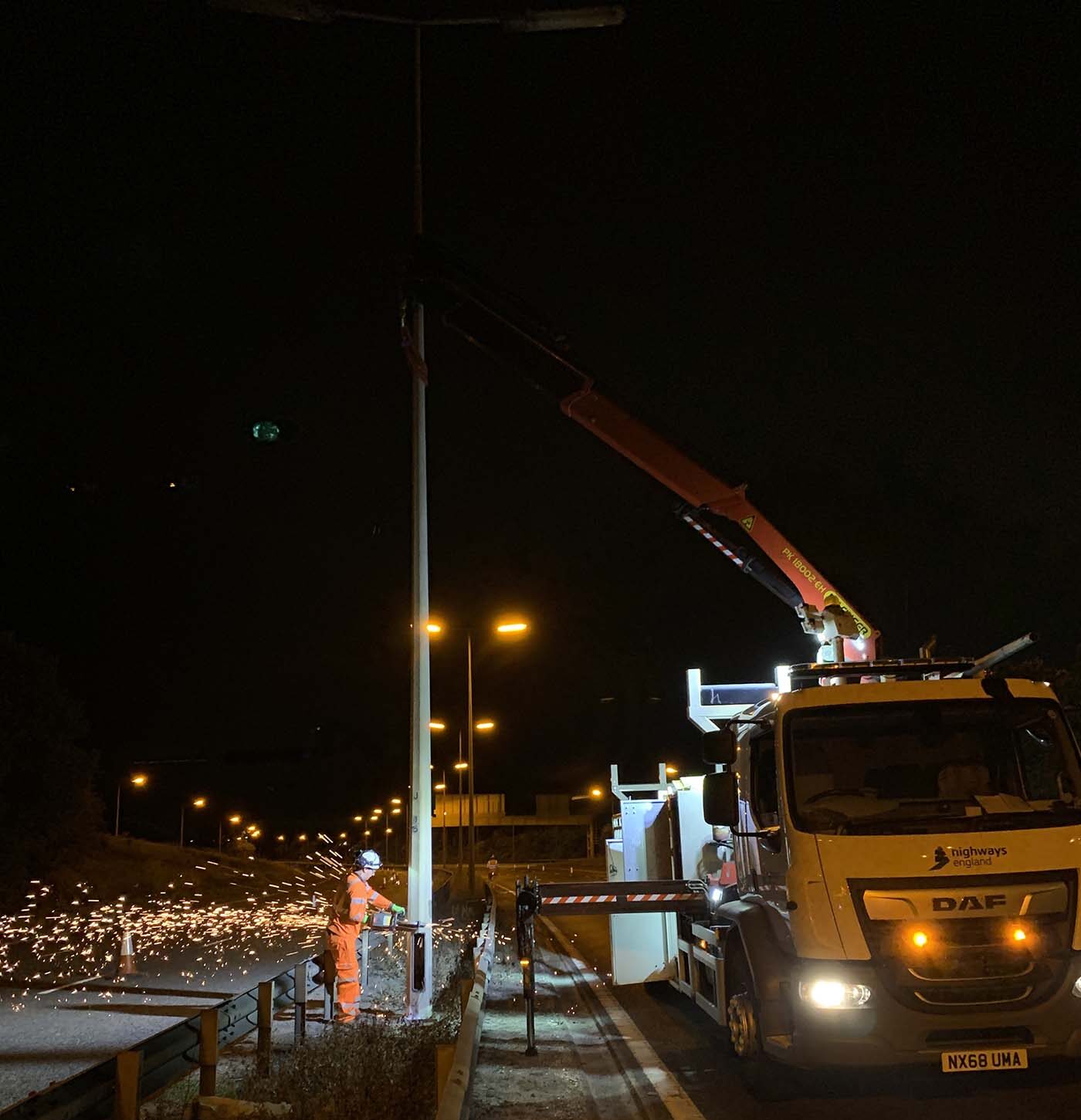
Street Lighting Column Testing Service
Our highly-trained team have over 15 years’ experience with structural testing of lighting columns via various non-destructive methods according to ILP TR22/Guidance Note 22/19 (GN22). Thanks to our experience we are able to offer professional advice and solutions for maintenance and care of street lighting columns, flood lights, high masts and other highway assets.
We employ a number of Non-Destructive Testing methods when it comes to lighting column inspection, and have been employed by many local authorities and contractors around the UK.
Loss of section testing
This will ascertain the percentage loss of thickness below the ground. With this measurement we will be able to provide an updated life expectancy for the asset, as well as a new retest period if necessary.
Ultrasonic testing / inspection
Using Ultrasonic testing we scan the columns structure for loss of wall thickness due to corrosion that can accrue anywhere on columns structure.
Using Ultrasonic testing technique we can test the hold down bolts / anchor bolts securing lighting columns and flood lights to their foundations for cracks and major corrosion.
Magnetic particle testing (MPI)
We use Magnetic Particle Testing method (MPI) to locate fatigue cracks on columns welds, including swage weld, tube to flange welds and locating fatigue cracks on cast columns.
Loss of section testing
At ground level and just below in lighting columns there is an environment rich in moisture, chlorides and oxygen, an environment which promotes the corrosion of steel structures.
Specialist Non-Destructive Testing
Our Specialist NDT division covers the Non-Destructive Testing of High Masts, Floodlights, Flanged and Bridge mounted columns, Traffic Mast Arms, Motorway Safety Barriers and other metal structures.
Electrical Testing
To maintain the integrity of our testing activity, all work is carried out by our fully qualified engineers to ensure compliance with current regulations. IEE Regulations requires periodic inspection and testing of lighting installations.